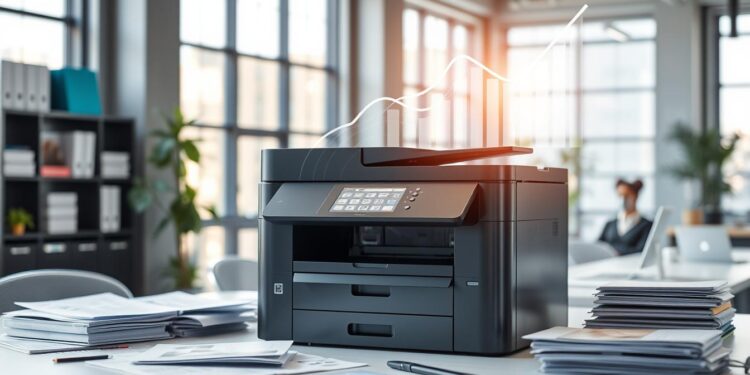In an era where business activities are becoming increasingly digital, there remain a few steadfast components of office efficiency that firmly hold their ground in the physical realm. One such indispensable element is the humble printer, an unsung hero facilitating the tangible exchange and archiving of information. In the quest for optimal office efficiency, selecting the right printer for business operations is crucial.
Understanding Business Needs
Prior to exploring the sea of printer options, businesses must first understand their specific needs. This involves assessing the volume of printing, the types of documents commonly printed, and the necessary features that would streamline operations. Only with these requirements laid out can an organization hope to find a printer that not only fits their needs, but also enhances productivity.
Printers and Productivity
It might seem inconsequential to some, but the efficiency of an office printer can have a noticeable impact on the productivity of a workforce. A printer that lags, jams, or delivers subpar quality can be a significant bottleneck, leading to frustration, downtime, and ultimately, a loss of productivity. Conversely, a smooth, high-functioning printer can contribute significantly to the seamless operation of business processes.
Volume and Speed Considerations
The volume of printing and the speed at which a printer operates are among the foremost considerations when choosing equipment for a business. High-volume, fast-paced environments will require machines that can keep up with the constant demand without succumbing to wear and tear. This means looking into printers with a high page-per-minute (PPM) rate and a robust duty cycle.

Quality and Resolution
Quality is another critical aspect, especially for businesses that produce customer-facing materials such as brochures, proposals, or reports. The right printer will offer sufficient resolution to ensure that each print is crisp and professional. Different printing needs may require various resolutions, and it is important to align the printer’s capabilities with the company’s quality requirements.
Multifunctional Features
Efficiency can be further enhanced with multifunction printers (MFPs) that consolidate several devices into one. Scanning, copying, faxing, and printing can all be managed from a single unit, saving space and streamlining processes. However, not every business may require these additional features, and the decision should be based on individual company needs.
Connectivity Options
In today’s interconnected workplaces, a printer must do more than simply print from a single desktop computer. Features like network connectivity, wireless printing, and mobile device compatibility are becoming increasingly important for offices, where flexibility and mobility are valued. Cloud printing capabilities can also advance the printer’s role in collaborative settings.
Cost-Effectiveness
While initial purchase price is an understandable concern for any business, the true cost of owning and operating a printer extends beyond the sticker price. Consumables like ink or toner, maintenance, and energy consumption are all factors that contribute to the total cost of ownership (TCO) and should be taken into account when picking a printer.
Environmental Impact
As businesses become more environmentally conscious, the ecological footprint of their office equipment is gaining attention. Printers that boast energy efficiency and are built with sustainable practices in mind not only reduce environmental impact but can also lead to cost savings in terms of energy bills.
Brand and Support
The manufacturer’s reputation and the support they offer are significant considerations. A reliable brand that provides excellent customer service and comprehensive warranties is a valuable partner in maintaining office productivity. Access to prompt and effective support in the event of printer issues is essential to avoid extended downtime.
The Importance of Upgradability
Business needs evolve over time, and so should their office equipment. A printer that is upgradable and can accommodate additional features, or increased capacity, is advantageous as it can adapt to the growing needs of a company. This foresight can prolong the utility of the printer and protect the initial investment.
Security Features
In our digitally-driven workplaces, security is a pivotal concern that extends to printers. Devices that boast security features to protect sensitive information, manage user access, and ensure secure printing practices are vital in maintaining the integrity of confidential documents.
Conclusion
Selecting the ideal printer for business needs is a crucial decision that impacts productivity, efficiency, and overall workflow. From volume and speed to quality, multifunctionality, and connectivity, every aspect must be weighed carefully. Cost-effectiveness, ecological considerations, brand reputation, and the ability to upgrade and maintain security also play pivotal roles in making an informed choice.
Investing in the right printer can foster a more efficient, environmentally conscious, and secure work environment, ultimately contributing to the business’s success. While it may require some research and forethought, the dividends paid in enhanced productivity and reduced headaches will be well worth the effort.
Takeaway
Choosing the right components for your office is about understanding the exchange between business needs and technological features. By making informed decisions about such essential equipment as printers, businesses can ensure they’re equipped not only for today’s demands but also for the challenges of tomorrow.













